The Return of Greek
Before the fall of Constantinople in 1453, Greek manuscripts had arrived in the West due to Western tradesmen, civil servants, and scientists who had traveled to Constantinople. However, the fall of the Byzantine Empire, and the arrival in the West of Byzantines seeking refuge from the new Turkish power, accelerated this exchange. As original Greek texts reached Italy, earlier Latin translations, based on Arabic versions or made with an insufficient knowledge of Greek, were now considered inadequate. Humanist scholars, translating directly from Greek, reintroduced Greek scientific literature, without totally eliminating medieval—Arabic—contributions.
The Humanists
Humanist scholars believed that the Greek and Latin classics contained lessons for a moral and effective life. The Byzantine Theodoros of Gaza translated Greek works of Aristotle into Latin, while the Italian Andrea Brenta rendered into Latin Hippocratic treatises unknown in the West and dealing with diet, preventive medicine, and deontology, as well as the previously known De natura hominis (On the nature of man), and the Iusiurandum (Oath).
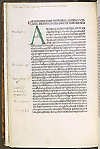
Latin translation by Theodoros of Gaza (ca. 1398–ca. 1478), printed in Venice, 1476.
WZ 230 A716da 1476
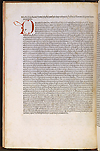
Latin translation by Theodoros of Gaza (ca. 1398–ca. 1478), printed in Venice, 1488.
WZ 230 A374p 1488
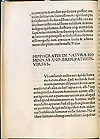
Latin translations by Andrea Brenta (ca. 1454–1485), printed in Rome, 1483–90.
WZ 230 H667L 1483
Practical Application
Another Humanist, Giorgio Valla, translated into Latin many classical and later Greek works. In so doing, he often transliterated Greek disease and plant names into the Latin alphabet. This could be one reason why Nicolao Leoniceno proposed a more scientific approach to the creation of a new Latin scientific lexicon.

De Plinii aliorumque erroribus in medicina. (On the mistakes of Pliny and many others in medicine), first published in Ferrara, 1492.
WZ 230 L585dp 1492
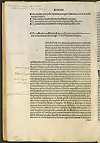
Latin translation from the Byzantine version by Georgio Valla (1447–1500), printed in Venice, 1498.
WZ 230 V175c 1498
Printed and Manuscript Books
The return to Greek language and science was achieved by with the publication of printed versions of classical works. Aldo Manuzio, a Roman-born humanist who created a printing press in Venice, specialized in such publications, including Aristotle's complete works, published from 1494 to 1497. He went on to publish, among others, Dioscorides' De materia medica in 1499. In spite of the gradually wider range of available texts in print, for a long period handwritten copy remained the most common way of reproducing Greek works. In the middle of the 16th century, the scribe Camillus of Venice was active in Florence, where he copied by hand classical Greek works, including medical ones.
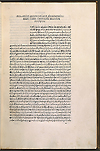
This first edition of Dioscorides' Greek text, printed in Venice in 1499 by Aldo Manuzio (ca. 1447–1515), was followed by no less than five more during the 16th century.
WZ 230 D594p 1499
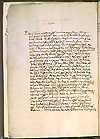
In the Greek copy by Camillus of Venice made in Florence at mid 16th century, the work was translated into Latin by a Renaissance scholar.
Manuscript E 82, f. 1 recto.
Last Reviewed: May 2, 2012


